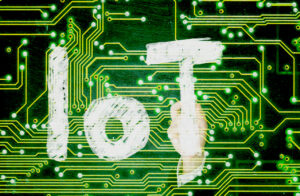How PCB Smart Manufacturing Overcomes IoT Challenges
2022-11-14
The Internet of Things, also commonly referred to as the fourth revolution, is expected to have approximately 27 billion connected IoT devices by 2025, as supply constraints ease and growth accelerates further.
One such skeleton that all electronic devices have is the printed circuit board. As electronic devices are gradually miniaturized and sophisticated, how do printed circuit boards go about overcoming these difficulties?
In the face of the Internet, some of the common challenges in PCB manufacturing
- Space constraints
- Product fitting
- Wearable products
- Power consumption
- Wireless connectivity
- Reliability
- High tensile strength
Space constraints
Faced with the growing space problem, rigid-flexible PCBs and HDI PCBs offer excellent solution ideas. They allow for more dense component placement, thus saving valuable space. The use of rigid-flex PCBs can offer more possibilities for mobile device installation. Some of the advantages they offer are
- Improved design space
- More dense circuitry
- Weight reduction (in fact, they can reduce weight by up to 95%)
- Increased speed and reliability
- Adaptability to different environments
Product fitting
Virtual prototyping can go a long way toward keeping the design in sync with the form of IOT it is targeting. Often, PCB designs also require the use of non-traditional materials that contribute to functionality, such as mesh or plastic.
Wearable Products
PCBs for wearable product designs need to budget for environmental factors, and to overcome this challenge, smart PCB manufacturing can rely on comprehensive simulation testing.
Power Consumption
As IoT devices continue to communicate with the Internet, battery life and battery capacity are worthy of attention. PCB designs therefore need to keep energy usage within the circuit within a strict budget.
Wireless Connectivity
IOT PCBs add the requirement for wireless Internet access, and proper installation using wireless modules and RF circuit components helps to mitigate the challenges.
Reliability
With the development of technology, IOT applications in the continuous penetration of different industries, such as the need to work in harsh and extreme environments, to ensure reliability and durability is not a small challenge, can be tested through a large number of simulation software simulation PCB.
To summarize
The IoT industry continues to evolve although it brings many challenges to PCB manufacturing, we need to pay more attention to the relationship between the product and its PCB form.
Close collaboration between designers and engineers throughout the design process can help achieve smart PCB manufacturing, and there is no doubt that PCB design methods will continue to evolve rapidly, maximizing reliability and reducing errors will be the rallying cry for all PCB designers.
Explore KingPCB’s IoT PCB manufacturing solutions
KingPCB, one of the leading PCB manufacturers in China, has over 10 years of experience in PCB manufacturing and assembly.
High quality, efficient communication, and fast delivery capability make us stand out, and our large portfolio of satisfied customers makes the greatest testimony to our success.
Stay in touch with us anytime by email sales@kingpcb.com, or submit your request via the contact page!



